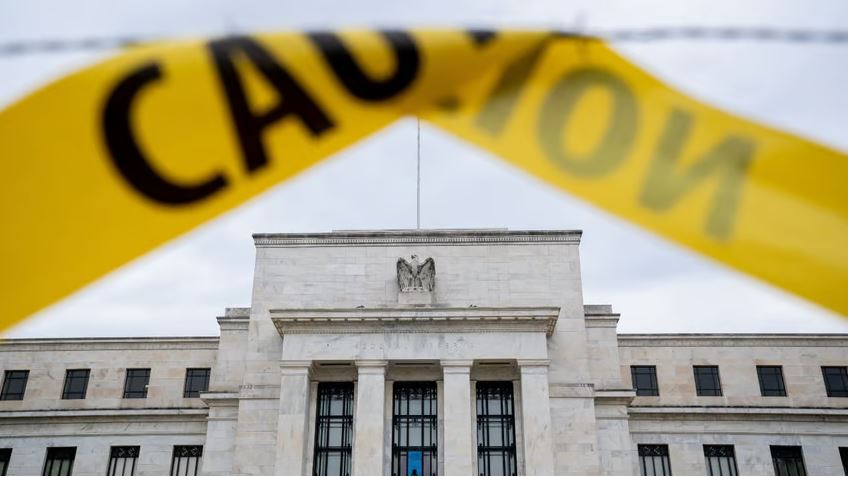Holiday cheer never really infiltrated the US. commercial real estate finance sector. Entering the new year, the country’s CRE capital markets continue to struggle with a general malaise that has resulted in a financing and transactional impasse. Its troubles have been brought on by a wide assortment of symptoms: Considerably higher interest rates for fixed- and floating-rate loans; stricter and more costly lending terms; tumbling property values; waves of billions of dollars in looming debt maturities; and a more skittish banking sector that’s acutely aware of tighter regulatory scrutiny
As a result, refinancings and new loan originations have slowed to a crawl. Property acquisitions, which fuel much of the activity in the debt market, have been repressed, and borrowers and lenders alike are averse to the additional costs and risks associated with financing in today’s environment; many deals just don’t pencil out.
“Before [rising rates shook the market in 2022], when you’d put out a bid for a refinancing, you’d get maybe a dozen lenders looking at it, but now you might get three or four,” said Trinity Investments CEO Sean Hehir. “It comes down to the relationship and who the partners are.”
But there is an inherent optimism about the next 12 months, especially in the hotel market, despite the battles being waged across CRE to get deals financed, said Michael Straw, an executive vice president of CBRE’s Institutional Hotels Debt & Structured Finance team.
Uptick in activity
Even though the sheer amount of money being lent against commercial properties cratered in 2023, there was actually a slight 2 percent increase in the third quarter in the number of hotel loan deals that closed, joining office and industrial properties as the only asset classes that saw an uptick in deal activity quarter-over-quarter, according to data from the Mortgage Bankers Association (MBA).
“There seems to be a [debt] execution for every type of hotel asset — up and down the chain scale — and for every scenario, whether that’s ground up construction, bridge or stabilized [assets], and for certain pockets of distress,” Straw said, adding that bank balance sheet debt is the “most elusive” to secure.
Lender interest in hotels exists despite the total dollar volume of loans made on hotels falling 52 percent year-over-year in the third quarter, per data from MBA; other asset classes did not fare any better.
Where the largest bank lenders in the U.S. have generally pulled back from lending to CRE, their smallest peers have increased their portfolio exposure to that type of debt, according to research from Fitch Ratings that cited data from the Federal Deposit Insurance Corporation. In some cases, the smaller local and regional banks bring a better level of understanding and confidence to CRE lending in the regions where they’re located, and many of these banks also aren’t weighed down by the layers of bureaucracy that might disrupt a debt deal with a larger, more intensely-regulated bank, Straw said.
Banking void
Debt funds and alternative lenders, such as those backed by institutional asset management firms, have also stepped up in meaningful ways to fill funding voids left by the banking sector, despite their own uncertainty about the market, sources told Hospitality Investor.
These fund vehicles can be found playing in every pool of debt that’s used to finance CRE, from cheaper senior loans to the more profitable mezzanine debt and preferred equity, because higher interest rates are allowing them to hit their high return targets up and down the capital stack, Straw said.
The market has shifted heavily in favor of lenders over the last 12 to 18 months, and hotels, in particular, offer strong risk-adjusted returns to those eager to deploy debt capital into the space, said Chatham Financial Managing Director Casey Irwin.
In an uncertain market that’s starved for liquidity, debt providers are mostly getting what they want. For refinancings and the rare new loan origination, lenders are demanding strict loan terms in efforts to protect their yields and shield against downside risk, and they are not willing to provide the same level of proceeds for various deals that they were just 18 to 24 months ago, sources said.
But for a battle-tested asset class like hotels, which outperformed in the aftermath of the pandemic, there are deals to be made. Strong hotel performance and economic indicators such as easing inflation and promising consumer spending and unemployment figures have established expectations for a rejuvenated 2024, and then there’s an added layer of hope around the idea that the sales and debt markets may become more fluid as interest rates ease next year, as per Federal Open Market Committee (FOMC) projections.
Last year, though, was filled with drudgery. Overall commercial real estate loan origination volume fell 49 percent on the year in the third quarter and seven percent from the second quarter, per MBA estimates. Depository institutions, such as banks, stopped lending money to CRE borrowers in the third quarter to the tune of a 73 percent plunge from a year ago; “investor-driven” lenders, as MBA refers to them, which can be classified as debt funds or private lenders, have sliced the amount of money they’re lending by more than half since last year.
Straw’s high-powered team at CBRE generally originates upwards of $7 billion in hotel debt in a “stable year,” he said, but activity in 2023 amounted to less than half that, largely due to a serious lack of hotel sales volume in the market.
Rate hikes
CRE owners and developers have faced nearly a dozen hikes to the benchmark federal funds overnight borrowing rate over the last two years, with the effective rate going from near zero at the start of 2022 to settling at 5.33 at the end of 2023, according to data from the Federal Reserve Bank of New York. The swiftest bout of monetary policy tightening by the Federal Reserve in 40 years contributed to tumbling commercial asset values and muddied sales and financing markets. It became more challenging to account for higher borrowing costs, which in some cases might outpace the rate of return an owner might expect from property investments.
Elevated rates clashed with a string of larger bank failures in the first half of 2023, which piled on the uncertainty for banks and added more cause for restricting new lending activity.
Lenders have also continued to kick loan maturities down the road, spurred on by batches of bruised office loans. Using the securitized realm as an example, $13.6 billion in securitized CRE debt was modified or extended in 2023, with more than half of that being office ($4.6 billion) and multifamily ($3.3 billion) loans, according to data from CRED iQ.
In September 2023, financial research firm Trepp reported that nearly $6 billion in securitized loans had been granted term extensions through the first eight-plus months of the year, with 69 percent of that total receiving extensions of one to 24 months. CRED iQ has pegged about $210 billion in securitized debt to mature in 2024, and the company expects loan extensions to continue to be an important mechanism.
Backbone of the CRE market
Banks, especially the local and regional banks, are the backbone of the U.S. CRE market, holding almost half of the sector’s roughly $6 trillion in outstanding debt, according to recent estimates from the Financial Stability Oversight Council (FSOC). Bank debt is generally the cheapest form of debt for a CRE investor — next to debt from life insurance companies — and when that money virtually dries up, it mucks up the standard dynamics of a real estate transaction, Straw said.
Capital optimization has become the “name of the game” for U.S. banks, particularly larger banks with total assets above $100 billion, said Fitch Ratings Group Credit Officer Julie Solar.
This has partly been in response to the Basel III endgame proposal that was put forth by regulators in July 2023 in response to financial uncertainty and banks going under earlier in the year; it would implement a stricter regulatory framework of capital buffers for the largest institutions to ensure they can withstand stress on their balance sheets.
Federal agencies and lawmakers took up more active roles in 2023, encouraging lender-borrower cooperation in loan workouts and also introducing legislation to make the burden of loan extensions and modifications more feasible.
Haves and have-nots
Access to the banking sector has become a tale of haves and have-nots, in a sense, Irwin said.
“Banks are really focused on relationships,” Irwin said. “I keep hearing the phrase, ‘looking for strategic or selective investments,’ where they are going to extend their balance sheet; that unfortunately leaves many still looking for partners to finance their deals.”
Hehir’s Trinity Investments has landed some of the largest and most high-profile hotel financings in the three years since COVID-19. In 2023 alone, Trinity closed on two massive refinancings with major banking institutions — one was a commercial mortgage-backed securities (CMBS) execution — which was made possible by its relationships with its bulky lenders, as well as its extensive track record and staunch private equity backing.
“There is, right now, a very judicious approach to capital usage because of pending capital rules and that has an outsized burden on the largest banks,” Solar said. “It’s unclear what will be the final outcome, but I think right now there’s a general break between [the larger and smaller banks].”
Irwin said she has seen her investor clients grow more keen to establish links to local and regional banks.
“[They] are saying, ‘if we have strong relationships with slightly larger regional banks, putting our deposits there, can that afford us the opportunity to use some of their balance sheet or get access to it?’” Irwin said. “That can benefit hotel investors—not to say that works in all cases because bank lending is generally constrained.”
There’s also an expectation that life insurance companies will come into 2024 with a renewed view toward CRE lending, especially the strong return profile hotel credit presents.
“Refreshed [life insurance company lending] allocation levels could spur some dialog, and we are having different conversations with different life cos on hotel lending,” Irwin said.
The CRE credit game is an advantageous one in today’s market, and hospitality’s malleability makes it a prime candidate for debt strategies. Room and services pricing fluidity, backstopped by hordes of travelers willing to shell out cash, has propped up hotels against the odds of inflation, rising rates and the financing quagmire that’s followed. And because hotels went through a post-pandemic period of pricing adjustment, many are primed for financing.
Might the dam begin to break open in 2024?
“Based on the Fed meeting [in December] and the ongoing trajectory in the hotel world in the last year, there’s optimism — that there are rate cuts on horizon, performance is looking better and inflation and unemployment are under control,” Straw said. “There is a certain amount of optimism about the next 12 months compared to the last 12 months.”
Read full article here
Article written by: Mack Burke







